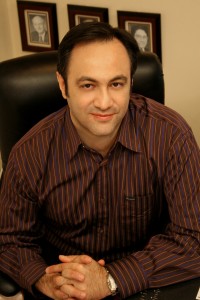 In recent news, a viral photo of a mother in CA gained a huge liking in a very short amount of time. The photo was a fun shot of the woman featuring her bikini body after having gone through 3 pregnancies over the years. Her children are now 8, 6, and 2, but her message is what encouraged many other mothers out there to embrace their bodies despite how self-conscious they may feel:
In recent news, a viral photo of a mother in CA gained a huge liking in a very short amount of time. The photo was a fun shot of the woman featuring her bikini body after having gone through 3 pregnancies over the years. Her children are now 8, 6, and 2, but her message is what encouraged many other mothers out there to embrace their bodies despite how self-conscious they may feel:
“I have stretch marks and I wear a bikini. I have a belly that’s permanently flabby from carrying three giant babies and I wear a bikini. My belly button is saggy… (which is something I didn’t even know was possible before!!) and I wear a bikini. I wear a bikini because I’m proud of this body and every mark on it. Those marks prove that I was blessed enough to carry my babies and that flabby tummy means I worked hard to lose what weight I could. I wear a bikini because the only man who’s opinion matters knows what I went through to look this way. That same man says he’s never seen anything sexier than my body, marks and all. They aren’t scars ladies, they’re stripes and you’ve earned them. Flaunt that body with pride!”
I Don’t See A Problem?
If you view or have viewed her photo* (link below), most will come to the conclusion that nothing really seems wrong with her body. Sure, signs of pregnancy show, but really what’s the big issue here?
The issue lies deeper than what you see in the photo. It’s an issue many pregnant mothers battle with after carrying a child for 9 months: stretch marks. Stretch marks cause many formerly pregnant women to feel very self-conscious about ever stepping back into a bikini again.
This is why a tummy tuck procedure performed by a board-certified plastic surgeon offers so much relief to pregnant mothers who are not satisfied with their stretch marks. A tummy tuck can fully smooth out or tone the abdominal area and remove a large area of stretch marks, while also restoring shape and definition.
As we can see here, this woman took an approach many do not: embracing the stretch marks as a statement to being blessed with pregnancy. Certainly a great outlook! It resonated so well with other mothers that it compelled them to post their own bikini shots. It was great to see that mothers can be happy with or without the use of plastic surgery!
*The photo can be viewed on her Facebook or Instagram.
Dr. Golshani is a board-certified tummy tuck surgeon in Beverly Hills with ample experience in dramatically changing lives through the use of cosmetic surgery. Dr. Golshani performs a wide range of surgical procedures including breast augmentation, Botox, rhinoplasty, eyelid surgery, liposuction, and many other procedures designed to bring out your beauty.

